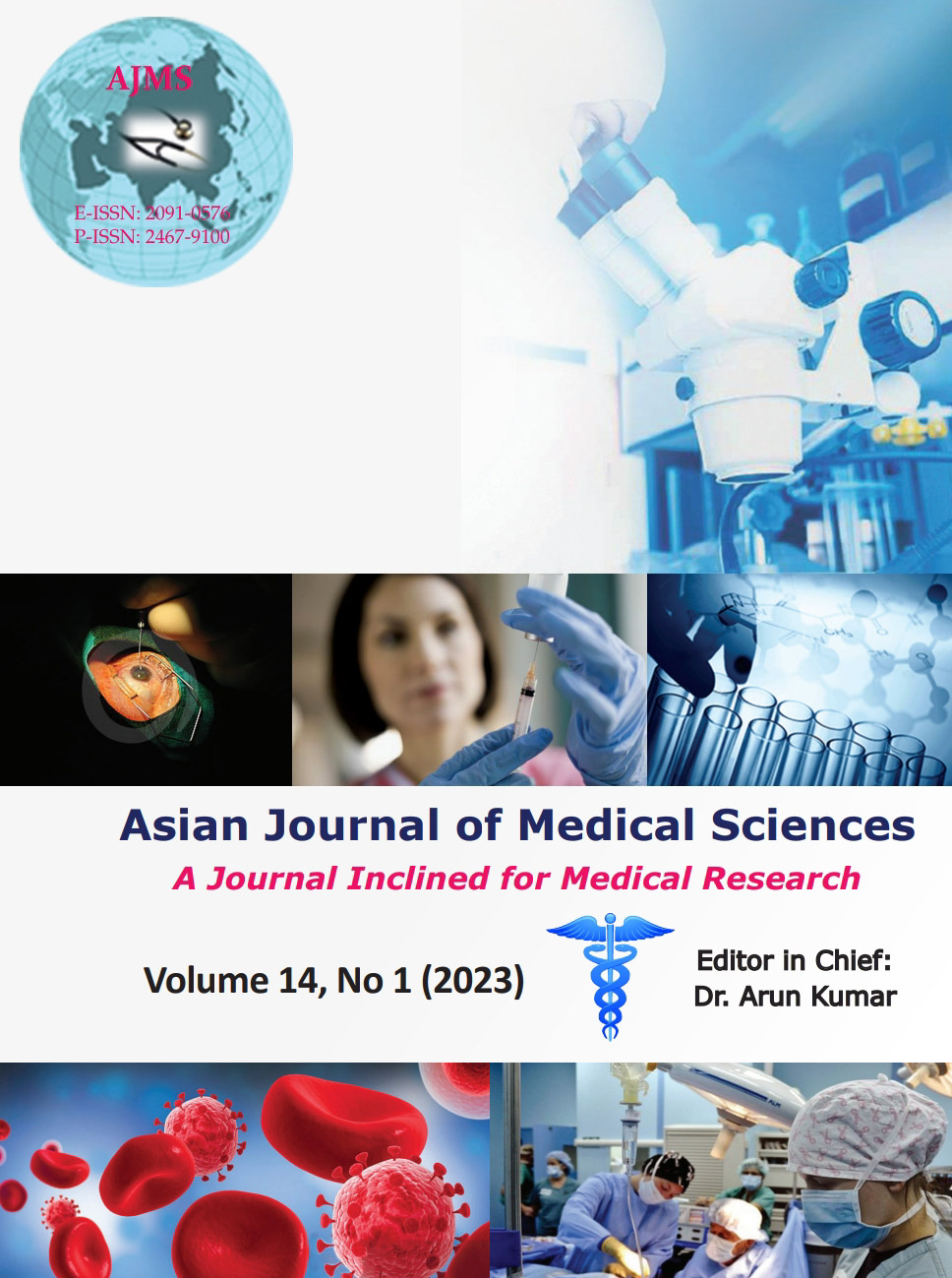Correlation between upper airway ultrasound and Cormack–Lehane grading during laryngoscopy – A prospective study
Keywords:
Airway; USG; Cormack–Lehane grade; Difficult intubation; Direct laryngoscopyAbstract
Background: Securing airway and adequate ventilation after induction of anesthesia is the utmost priority of anesthesiologists, failure of that can lead to hypoxic brain injury and death in a few minutes.
Aims and Objectives: The aims of this study were to ascertain the role of ultrasonography in predicting difficult intubation by comparing different ultrasonographic parameters.
Materials and Methods: One hundred patients posted for elective surgery under general anesthesia were studied. The study was carried out in two phases. The first phase – during the pre-anesthetic checkup, ultrasonographic measurements of Anterior neck soft-tissue thickness at the level of hyoid (ANS-Hyoid), anterior neck soft tissue thickness at the level of vocal cords (ANS-VC), pre-epiglottic space (Pre-E), distance from the epiglottis to the mid-point of the distance between the vocal cords (EVL), and the ratio of both (PES/EVL) was also done. In the second phase, Cormack–Lehane (CL) grade was noted during intubation. A Chi-square test was applied to correlate ultrasonographic parameters and CL grade. Sensitivity, specificity, an area under the receiver operating characteristic (ROC) curve, negative predictive value, and positive predictive value were calculated for various parameters.
Results: In this study among the studied parameter, only ANS–VC was statistically significant in predicting difficult intubation (P<0.0001). ANS-VC >0.32 cm was 93.3% sensitive and 84.7% specific and had Area under the ROC curve of 85% in predicting CL grade 3 and 4 (difficult intubation).
Conclusion: USG is a useful tool in predicting difficult intubation. ANS-VC >0.32 cm is a highly sensitive and specific predictor of difficult intubation, while other USG parameters are not indicative of difficult intubation.
Downloads
Downloads
Published
How to Cite
Issue
Section
License
Copyright (c) 2022 Asian Journal of Medical Sciences

This work is licensed under a Creative Commons Attribution-NonCommercial 4.0 International License.
Authors who publish with this journal agree to the following terms:
- The journal holds copyright and publishes the work under a Creative Commons CC-BY-NC license that permits use, distribution and reprduction in any medium, provided the original work is properly cited and is not used for commercial purposes. The journal should be recognised as the original publisher of this work.
- Authors are able to enter into separate, additional contractual arrangements for the non-exclusive distribution of the journal's published version of the work (e.g., post it to an institutional repository or publish it in a book), with an acknowledgement of its initial publication in this journal.
- Authors are permitted and encouraged to post their work online (e.g., in institutional repositories or on their website) prior to and during the submission process, as it can lead to productive exchanges, as well as earlier and greater citation of published work (See The Effect of Open Access).




